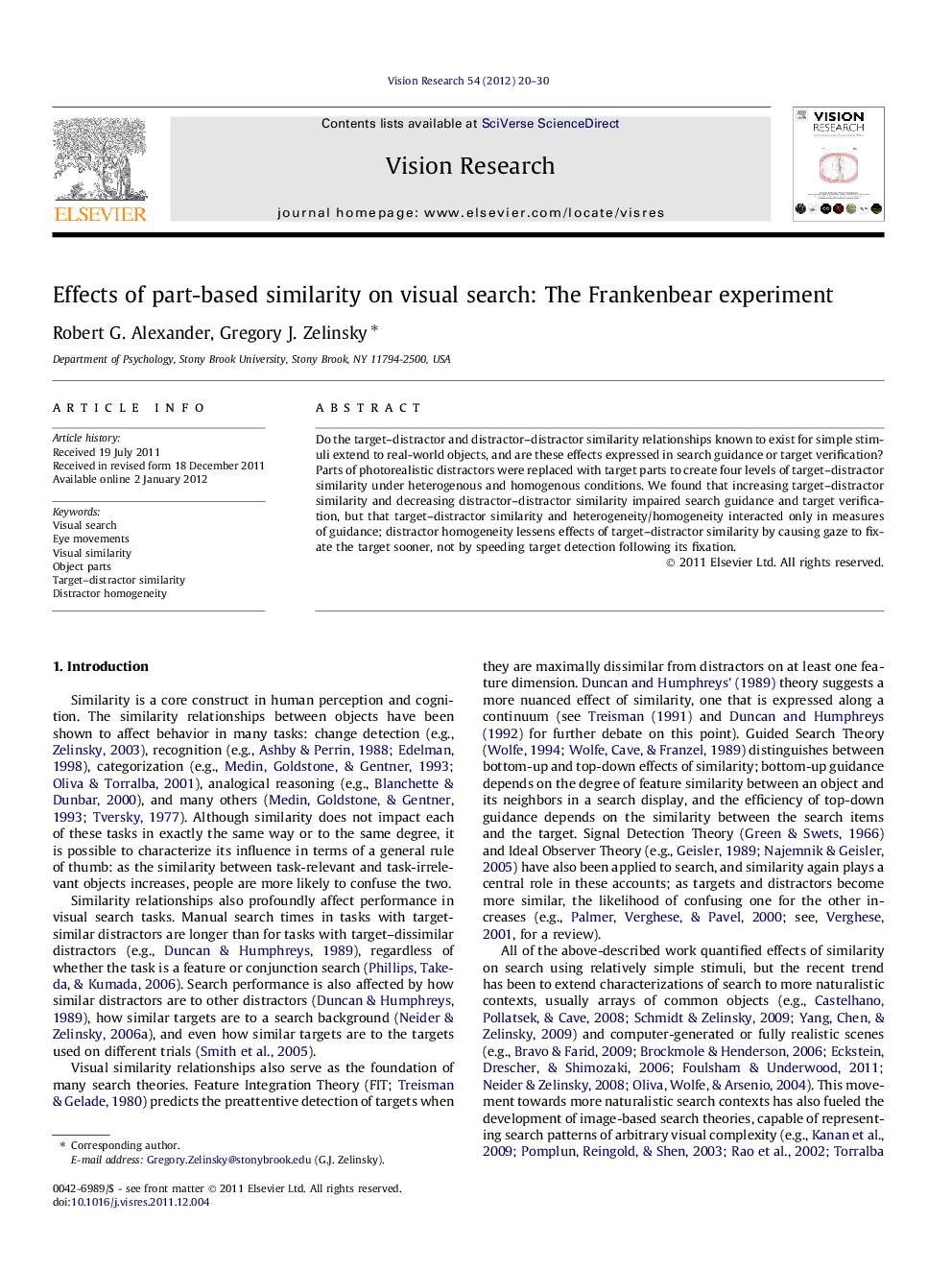| Article ID | Journal | Published Year | Pages | File Type |
|---|---|---|---|---|
| 6203724 | Vision Research | 2012 | 11 Pages |
Do the target-distractor and distractor-distractor similarity relationships known to exist for simple stimuli extend to real-world objects, and are these effects expressed in search guidance or target verification? Parts of photorealistic distractors were replaced with target parts to create four levels of target-distractor similarity under heterogenous and homogenous conditions. We found that increasing target-distractor similarity and decreasing distractor-distractor similarity impaired search guidance and target verification, but that target-distractor similarity and heterogeneity/homogeneity interacted only in measures of guidance; distractor homogeneity lessens effects of target-distractor similarity by causing gaze to fixate the target sooner, not by speeding target detection following its fixation.
⺠Search is very difficult when distractors share even one part with the target. ⺠Target-distractor similarity affects the first object fixated during search. ⺠Distractor-distractor similarity does not. ⺠Target-distractor and distractor-distractor similarity interact to guide search. ⺠Target verification times showed no such interaction.
